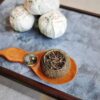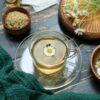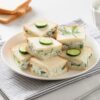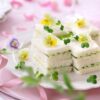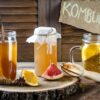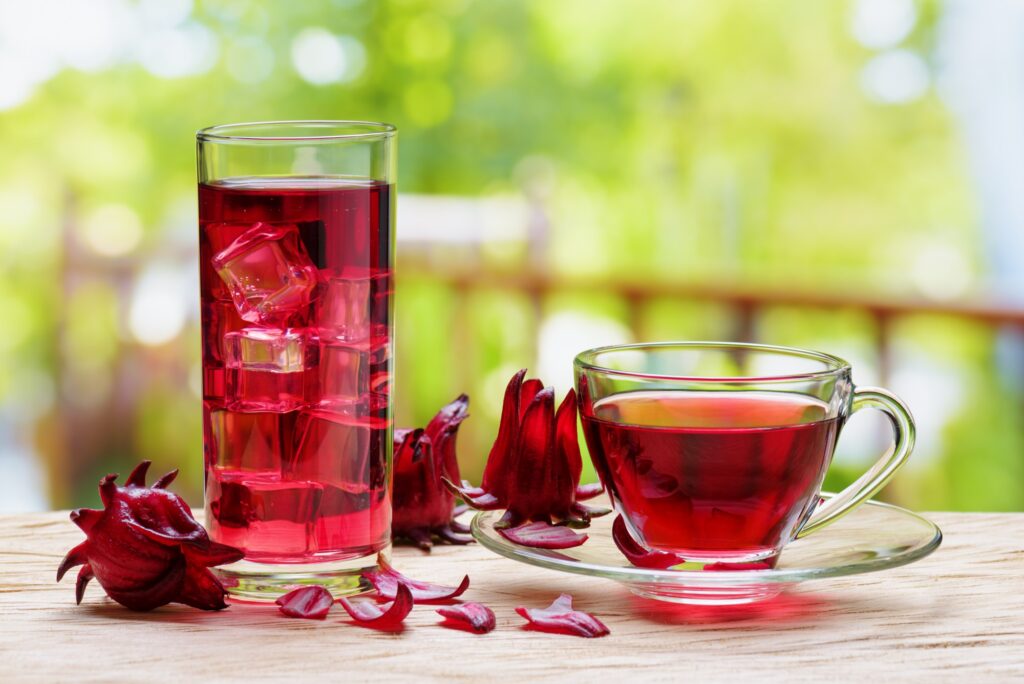
Hibiscus tea, a vibrant and tangy beverage, has been captivating taste buds and offering a plethora of health advantages for centuries. Derived from the striking crimson calyces of the Hibiscus sabdariffa plant, this herbal infusion has transcended cultural boundaries, becoming a cherished beverage in numerous regions worldwide. Whether you’re a seasoned tea connoisseur or a newcomer to the realm of herbal teas, this comprehensive guide will unveil the captivating history, remarkable health benefits, and intricate brewing techniques associated with hibiscus tea.
History and Origins of Hibiscus Tea
The origins of hibiscus tea can be traced back to ancient civilizations, where the Hibiscus sabdariffa plant was revered for its medicinal properties and culinary versatility. Indigenous to regions of Africa and Asia, the plant’s vibrant calyces, or the protective structures surrounding the flower bud, were traditionally used to create refreshing beverages and flavorful dishes.
Throughout history, hibiscus tea has played a significant role in various cultures:
- In Egypt, it was a beloved drink known as “karkade,” often served chilled and sweetened with honey or sugar.
- In Mexico, the tea is called “jamaica” and is a staple ingredient in traditional dishes and beverages.
- In the Caribbean islands, hibiscus tea is fondly referred to as “sorrel” and is a quintessential part of festive celebrations.
Today, the popularity of hibiscus tea has spread across the globe, with its vibrant color, tart flavor, and numerous health benefits captivating tea enthusiasts worldwide.
Health Benefits of Hibiscus Tea
Beyond its delightful taste, hibiscus tea offers an impressive array of health benefits, making it a wise choice for those seeking to enhance their overall well-being. Here are some of the key advantages associated with this remarkable beverage:
- Antioxidant Properties: Hibiscus tea is rich in polyphenolic compounds, particularly anthocyanins, which are potent antioxidants. These compounds help neutralize harmful free radicals in the body, reducing oxidative stress and potentially lowering the risk of chronic diseases.
- Blood Pressure Regulation: Several studies have demonstrated the potential of hibiscus tea in lowering blood pressure levels. The bioactive compounds present in the tea may promote vasodilation, improving blood flow and reducing the strain on the cardiovascular system.
- Weight Management Support: Hibiscus tea may aid in weight management efforts by potentially boosting metabolism and suppressing appetite. Some research suggests that the tea may inhibit the production of enzymes involved in fat absorption, thereby reducing calorie intake.
- Digestive Health: The natural diuretic properties of hibiscus tea can promote healthy bowel movements and alleviate constipation. Additionally, the tea’s mild laxative effects may help relieve bloating and discomfort associated with digestive issues.
- Anti-inflammatory Properties: Hibiscus tea contains compounds that exhibit anti-inflammatory effects, which may help alleviate symptoms of conditions like arthritis, gout, and other inflammatory disorders.
- Liver Health Support: Preliminary research indicates that hibiscus tea may have a protective effect on liver health by reducing oxidative stress and promoting the regeneration of liver cells.
Nutritional Profile of Hibiscus Tea
While hibiscus tea is primarily consumed for its refreshing taste and potential health benefits, it also offers a modest amount of essential nutrients. Here’s a breakdown of the nutritional profile of hibiscus tea:
- Vitamin C: Hibiscus tea is an excellent source of vitamin C, providing up to 20% of the recommended daily intake in a single serving. Vitamin C is a potent antioxidant that supports immune function and collagen production.
- Minerals: The tea contains various minerals, including iron, calcium, magnesium, and zinc, which play crucial roles in numerous bodily functions.
- Polyphenols: Hibiscus tea is rich in polyphenolic compounds, such as anthocyanins, flavonoids, and phenolic acids, which contribute to its antioxidant and anti-inflammatory properties.
- Low in Calories: Unsweetened hibiscus tea is virtually calorie-free, making it an excellent choice for those watching their calorie intake or following a weight management plan.
It’s important to note that the exact nutritional composition of hibiscus tea may vary depending on factors such as growing conditions, processing methods, and brewing techniques.
How to Brew Hibiscus Tea
Brewing hibiscus tea is a straightforward process that can be easily mastered with a few simple steps. Here’s a guide to preparing a delightful cup of this vibrant beverage:
Ingredients:
- Dried hibiscus calyces (also known as hibiscus flowers or roselle)
- Fresh, filtered water
- Optional: honey, sugar, or other sweeteners (if desired)
- Optional: lemon slices, mint leaves, or other garnishes
Brewing Instructions:
- Measure the Hibiscus Calyces: Start by measuring the desired amount of dried hibiscus calyces. A general guideline is to use 1-2 teaspoons of calyces per cup of water, but you can adjust the amount according to your personal taste preferences.
- Bring Water to a Boil: Heat fresh, filtered water in a kettle or pot until it reaches a rolling boil.
- Steep the Calyces: Once the water is boiling, remove it from the heat and add the hibiscus calyces to your teapot or heat-resistant container. Allow the calyces to steep for 5-7 minutes, depending on your desired strength.
- Strain and Serve: After the recommended steeping time, use a fine mesh strainer to separate the hibiscus calyces from the tea. Pour the vibrant, ruby-red liquid into your favorite cup or teapot.
- Sweeten and Garnish (Optional): If you prefer a sweeter taste, add a touch of honey, sugar, or your preferred sweetener to the hibiscus tea. You can also garnish your tea with lemon slices, mint leaves, or other complementary flavors for an extra burst of freshness.
Remember, the steeping time and the amount of hibiscus calyces used can significantly impact the flavor intensity and color of your tea. Experiment to find your perfect brew!
Different Varieties of Hibiscus Tea
While the Hibiscus sabdariffa plant is the most commonly used variety for making hibiscus tea, there are several other species within the Hibiscus genus that can also be utilized to create unique and flavorful infusions. Here are some popular varieties to explore:
- Roselle (Hibiscus sabdariffa): This is the classic variety used for traditional hibiscus tea. It produces vibrant red calyces and yields a tart, cranberry-like flavor.
- Kenaf (Hibiscus cannabinus): Also known as “Deccan hemp,” this variety is native to India and produces a milder, slightly sweeter tea with a hint of grassiness.
- Hawaiian Red Hibiscus (Hibiscus rosa-sinensis): Commonly grown as an ornamental plant, the red flowers of this variety can be used to make a delicate, floral-tasting tea.
- Musk Mallow (Hibiscus moschatus): This variety, native to Africa and Asia, produces a tea with a subtly sweet and musky aroma, often described as having notes of rose and honey.
- Sour Hibiscus (Hibiscus sabdariffa var. altissima): As the name suggests, this variety yields a particularly tart and tangy tea, making it a popular choice for those who prefer a more intense flavor profile.
Experimenting with different hibiscus varieties can introduce unique flavors and aromas to your tea experience, allowing you to explore the diverse range of possibilities offered by this versatile plant.
Popular Recipes and Infusions with Hibiscus Tea
While hibiscus tea is delightful on its own, its vibrant color and tangy flavor make it an excellent base for various creative recipes and infusions. Here are some popular concoctions to try:
- Hibiscus Iced Tea: Beat the heat by brewing a strong batch of hibiscus tea and serving it over ice. You can enhance the flavor by adding fresh mint leaves, lemon slices, or a touch of honey.
- Hibiscus Lemonade: Combine the tartness of hibiscus tea with the refreshing zing of lemon juice to create a thirst-quenching lemonade. Sweeten to taste with honey or sugar.
- Hibiscus Margarita: Elevate your cocktail game by infusing tequila with hibiscus tea and blending it with fresh lime juice, triple sec, and a touch of agave nectar for a vibrant and flavorful margarita.
- Hibiscus Fruit Punch: Mix hibiscus tea with your favorite fruit juices, such as pineapple, orange, and cranberry, for a refreshing and festive punch.
- Hibiscus Smoothie: Blend hibiscus tea with fresh or frozen fruits, yogurt, and a touch of honey or sweetener for a nutritious and delicious smoothie.
- Hibiscus Tea Popsicles: Cool down on hot summer days by freezing hibiscus tea into refreshing popsicles. You can add fruit purees or chunks for an extra burst of flavor and texture.
- Hibiscus Tea Jelly: Transform hibiscus tea into a delightful jelly by combining it with pectin and sugar. Serve it as a sweet accompaniment to scones, toast, or other baked goods.
These recipes and infusions showcase the versatility of hibiscus tea, allowing you to incorporate its vibrant flavor and potential health benefits into a wide range of beverages and treats.
Precautions and Side Effects of Hibiscus Tea
While hibiscus tea is generally considered safe for most individuals when consumed in moderation, there are a few precautions and potential side effects to be aware of:
- Diuretic Effect: Hibiscus tea has natural diuretic properties, which means it can increase urine output. While this can be beneficial for promoting healthy kidney function, it’s important to stay hydrated and monitor fluid intake, especially for those with certain medical conditions or taking medications that affect fluid balance.
- Interactions with Medications: Hibiscus tea may interact with certain medications, such as hydrochlorothiazide (a diuretic) and acetaminophen. It’s advisable to consult with a healthcare professional before consuming hibiscus tea if you are taking any prescription drugs.
- Pregnancy and Breastfeeding Considerations: While hibiscus tea is generally considered safe during pregnancy and breastfeeding when consumed in moderation, it’s recommended to consult with a healthcare provider to ensure it aligns with your specific needs and circumstances.
- Allergic Reactions: Some individuals may be allergic to hibiscus or experience adverse reactions, such as stomach discomfort or skin irritation. If you experience any adverse effects, discontinue consumption and seek medical advice if necessary.
- Overconsumption: Excessive consumption of hibiscus tea can potentially lead to side effects like gastrointestinal distress, headaches, or electrolyte imbalances. It’s essential to consume hibiscus tea in moderation and stay within recommended daily intake guidelines.
As with any dietary supplement or herbal product, it’s advisable to consult with a healthcare professional, especially if you have pre-existing medical conditions or are taking medications, to ensure that hibiscus tea is safe for your individual circumstances.
Where to Buy Hibiscus Tea
Hibiscus tea has gained widespread popularity, making it readily available in various forms and from different sources. Here are some options to consider when purchasing hibiscus tea:
- Specialty Tea Shops: Many local and online specialty tea shops offer a selection of high-quality hibiscus teas, often sourced from reputable suppliers. These shops may provide different varieties, blends, and packaging options.
- Grocery Stores: Major grocery chains and health food stores commonly carry hibiscus tea in their tea or herbal beverage sections. Look for popular brands or store-brand options in tea bag or loose-leaf form.
- Online Retailers: Online marketplaces and specialty tea websites offer a wide range of hibiscus tea products, including organic and fair-trade options. This can be a convenient way to explore different varieties and blends from around the world.
- Ethnic Markets: If you have access to ethnic markets or specialty stores catering to African, Caribbean, or Latin American communities, you may find a diverse selection of hibiscus teas and related products.
- Health Food Stores: Many health food stores and natural grocery chains carry hibiscus tea, often in bulk or loose-leaf form, as well as pre-packaged options.
When purchasing hibiscus tea, consider factors such as freshness, quality, and sourcing. Look for products with clear labeling and expiration dates, and opt for organic or fair-trade options whenever possible. Additionally, consider supporting local or small-batch producers for a more unique and sustainable hibiscus tea experience.
Incorporating Hibiscus Tea into a Healthy Lifestyle
Hibiscus tea stands as a remarkable beverage, offering a harmonious blend of tantalizing flavors, vibrant colors, and potential health benefits. By incorporating this ancient herbal infusion into your daily routine, you can embark on a journey of wellness and indulgence.
Whether you seek to support cardiovascular health, promote weight management, or simply enjoy a refreshing and flavorful beverage, hibiscus tea can be a valuable addition to a balanced and healthy lifestyle. Experiment with different brewing techniques, explore creative recipes, and savor the unique flavors and aromas that this versatile plant has to offer.
Remember, moderation is key when consuming any beverage or food. Consult with healthcare professionals, especially if you have pre-existing medical conditions or are taking medications, to ensure that hibiscus tea aligns with your individual needs.
Embrace the captivating world of hibiscus tea and embark on a journey of discovery, one sip at a time. Cheers to vibrant health and delightful flavors!

